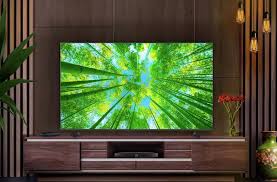
Understanding Energy Efficient TVs
In today’s fast-paced world, the demand for energy efficiency has grown tremendously, impacting various sectors of our daily lives. One major player in this evolution is the television. Energy efficient TVs not only provide better picture quality and advanced features but also significantly lower electricity bills. The shift towards sustainable technology is essential for environmental conservation, making the concept of energy efficient TVs a vital topic. For those interested in the best options available, here’s a detailed look at energy efficient TVs. For an in-depth guide on the top energy-efficient TVs, check out energy efficent tv https://top10energyefficiency.org.uk/top-5-energy-efficient-tvs/.
What Makes a TV Energy Efficient?
Energy efficient TVs are designed to consume less power compared to traditional models while maintaining high-quality performance. Several key features contribute to their efficiency, including:
- LED Backlighting: Most energy efficient TVs use LED (Light Emitting Diode) technology for backlighting, which offers better brightness and color contrast while consuming less power than older technologies.
- Smart Technology: Smart TVs allow users to stream content directly from the internet, reducing the need for external devices that require additional energy.
- Energy-Saving Modes: Many modern TVs come with energy-saving settings that automatically adjust brightness based on ambient light and usage.
- Eco-Friendly Certifications: Look for TVs that carry ENERGY STAR labels or similar eco-certifications, indicating compliance with efficiency standards.
The Impact of Energy Efficient TVs on the Environment
Switching to an energy efficient TV can significantly reduce your carbon footprint. According to statistics, if every household in the United States replaced just one energy hog TV with an energy efficient model, the impact could be equivalent to the emissions of nearly 2 million cars. By opting for these TVs, you’re not just saving on energy costs; you’re also participating in a global effort to combat climate change.
Cost Savings Over Time
While the initial cost of energy efficient TVs may be slightly higher, the long-term savings due to lower energy consumption will outweigh this expense. Here’s how:

- Lower Electricity Bills: Energy efficient TVs consume less power. For example, a standard TV might use around 200 watts while an energy efficient model may only use 80 watts. This can translate to significant savings on your monthly electricity bill.
- Increased Lifespan: Many energy efficient models are built to last longer and perform better, potentially saving you money on repairs and replacements.
- Government Incentives: In some regions, government programs offer rebates and incentives for purchasing energy efficient appliances, further lowering your investment cost.
Choosing the Right Energy Efficient TV for You
Selecting the right energy efficient TV depends on various factors. Here are some tips to help you make an informed decision:
- Screen Size: Consider your room’s size and viewing distance when picking a screen size. Larger screens often consume more energy, but newer models might have efficiency features that compensate.
- Technology Type: Decide between LED, OLED, and QLED technologies. Each has its pros and cons regarding energy efficiency, brightness, and overall picture quality.
- Features: Look for smart features that enhance usability, such as voice control and easy navigation. Features like these can also lead to less energy use by making it easier to use your TV smartly.
- Brand Reputation: Research brand reliability, warranty conditions, and customer reviews to ensure you’re making a good investment.
The Future of Energy Efficient TVs
The evolution of technology will likely lead us to even more energy efficient models. As consumers continue to demand sustainability, manufacturers are constantly innovating. Future developments may include:
- Improved Display Technologies: Innovations in display technology may lead to even better energy efficiency without compromising picture quality.
- Integration with Smart Home Systems: Future TVs will integrate seamlessly with home automation systems, allowing users to control energy consumption more effectively.
- Sustainable Manufacturing Processes: Brands are increasingly adopting sustainable manufacturing processes, meaning even the production of your TV can have a reduced environmental impact.
Conclusion
Energy efficient TVs represent a significant step towards a more sustainable future. By opting for these modern devices, consumers aren’t just investing in quality entertainment; they are making a wise decision for both their finances and the environment. We encourage you to explore your options, consult reviews, and consider making the switch to an energy efficient TV today. The benefits are clear, from reduced electricity costs to a smaller carbon footprint, making it a choice that truly pays off.
